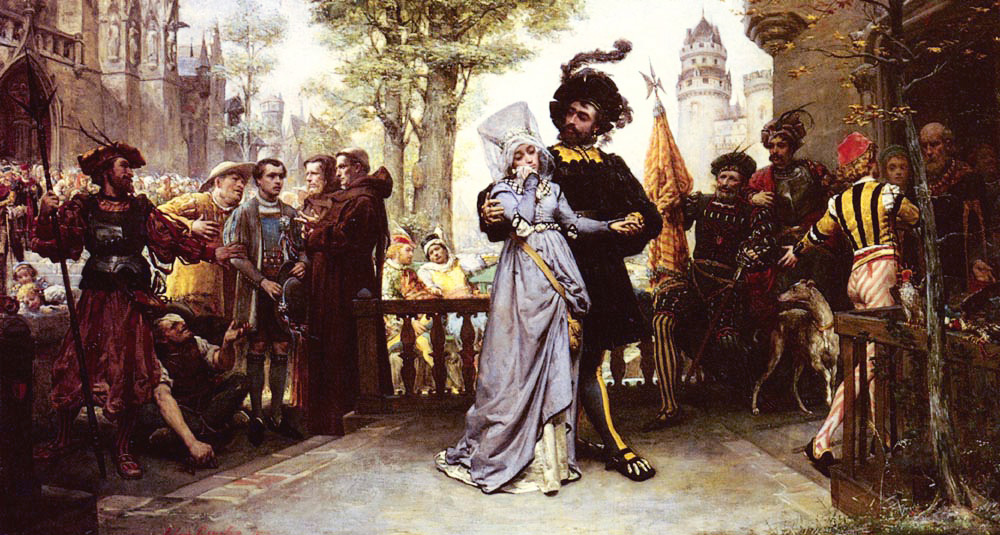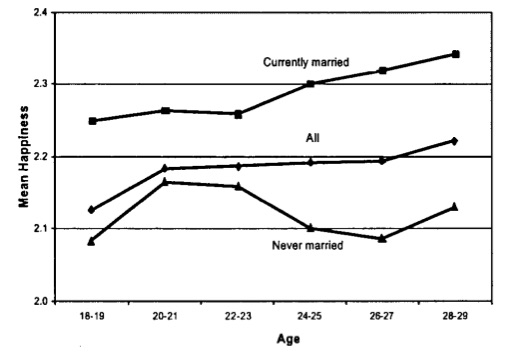תלמוד בבלי כתובות פו ב
יותר ממה שהאיש רוצה לישא אשה רוצה להנשא
More than a man desires to wed, a woman desires to be wed.
What happens if a man owes money to both a debtor and to his ex-wife to pay for her כתובה?
In today's daf, the Talmud teaches that if this unlucky person can only repay one of the debts, he should repay the creditor and not his ex-wife. Although this ruling might discourage women from getting married in the first place, we should not be concerned, because "more than a man desires to wed, a woman desires to be wed."
We've had other occasions to look at sweeping statements made by the rabbis of the Talmud about ways women view marriage. Resh Lakish famously stated (יבמות 118) that "it was better for a women to live with a husband than to live alone" (though you may recall that there were at least four ways to understand this statement of Resh Lakish). We also noted that the late Rabbi J.B. ("the Rav") Soloveitchik believed that this statement reflected "an existential fact." (It also turned out that he was wrong.) While the Rav didn't declare our new psychological insight to be an "existential fact," does it have any validity to it in today's society? Do women really want to be married more than men?
Societal norms change very fast
In 2015 the US Supreme Court heard oral arguments about whether the Constitution guarantees same-sex couples the right to marry. On the one hand, Justice Kennedy pointed out that the traditional definition of marriage "has been with us for millennia. And it’s very difficult for the Court to say, oh, well, we — we know better." On the other hand, gay marriage was then legal in 36 states in the US. (It is now legal in all 50 states, but stay tuned.) The lesson here is that societal norms of about all aspects of marriage are changing very quickly. It may indeed have been true in talmudic times that women wanted to marry more than did men, but our society is vastly different. And with that note of caution, we may proceed.
Who Wants to be Married?
In 2011 the anthropologist Helen Fisher and two colleagues released the "largest and most comprehensive nationally-representative study of single men and women ever done." They surveyed 5,200 single people in the US aged 21 to over 65, and found "a new picture of single Americans emerges that is radically different than it was 50 years ago..." And what of the talmudic claim that women are more eager to marry? It does not seem to be true, (at least in the US).
This national survey clearly shows that men are just as eager to marry as women are; 33% of both sexes want to say “I do.
A 2021 version of the same survey found that “men (42%) are more ready to find a long-term romantic relationship than women (29%).” So today, at least in the US, it is not correct to say that women want to be married more than men. Some of Fisher's other findings about the attitudes of single men might surprise you too:
Men in every age group are more eager than women to have children. Even young men. Among those between ages 21 and 34, 51% of men want kids, while 46% of women yearn for young. Men are less picky too. Fewer men say it is important to find a partner of their own ethnic background (20% of men vs 29% of women said this is a “must have” or “very important”); and fewer say they want someone of their own religion (17% of men vs 28% of women said this is a “must have” or “very important”). Men are also more likely to have experienced love at first sight...
Let's give the last word to Dr Fisher, (who serves as an advisor to Match.com), and remember the danger of assuming that human nature does not change.
My colleagues and I have put over 60 men and women ages 18-57 into a brain scanner to study the brain circuitry of romantic passion. We found no gender differences. This..study supports what I have long suspected: that men are just as eager to find a partner, fall in love, commit long term and raise a family. It’s an illuminating, indeed myth-shattering, new set of scientific data. And the sooner we embrace these findings, and fling off our outmoded and unproductive beliefs about both sexes, the faster we will find—and keep–the love we want.








